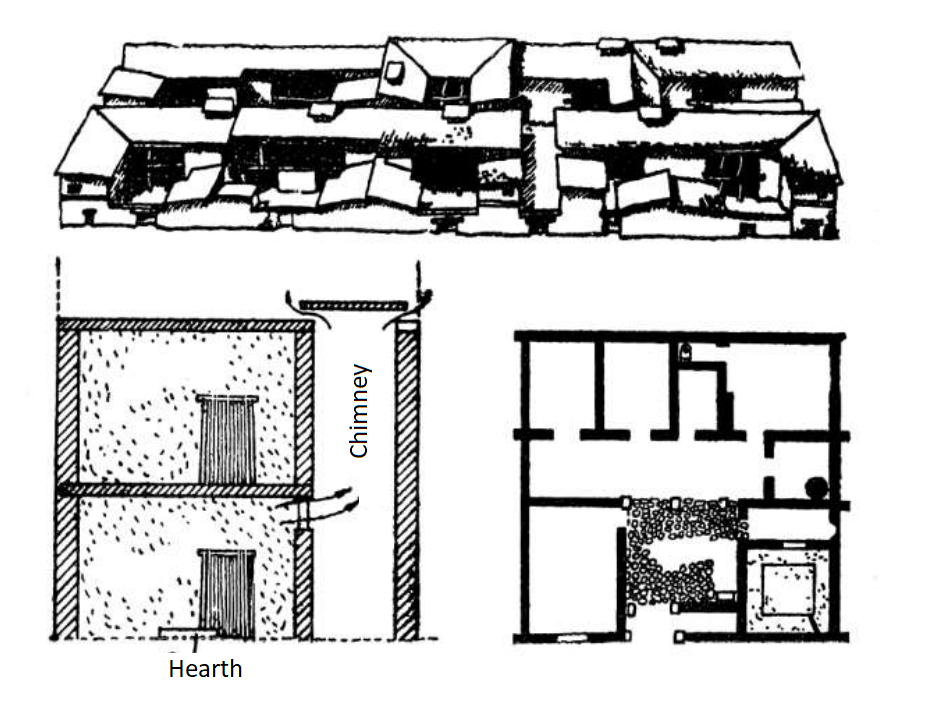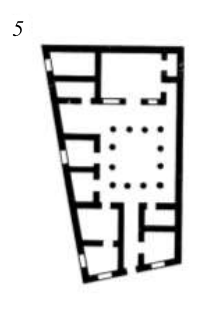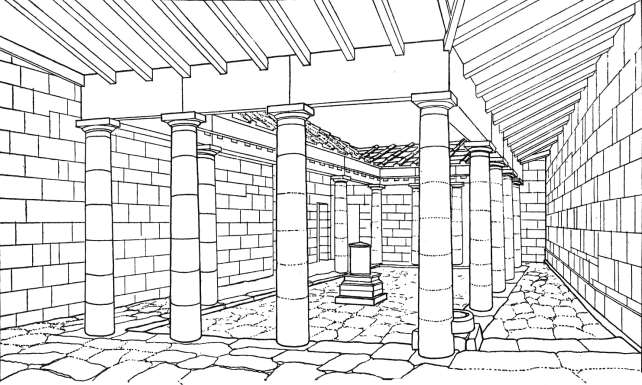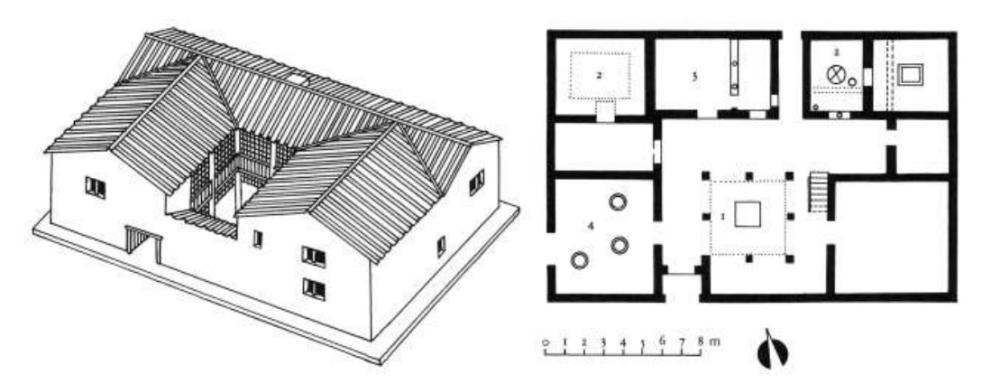-
Posts
30 -
Joined
-
Last visited
Posts posted by Hemachandra
-
-
On 09/10/2023 at 7:58 PM, alre said:
At the moment only Carthage has 2-story houses, by virtue of phoenicians apparently being the first to employ them.
On 08/10/2023 at 6:54 PM, wowgetoffyourcellphone said:It's because you have to fit the idea into little 3x3 blocks
If the developers are interested in this idea and the books from which I quoted, then here is a link to the books (note, it is in Russian, but I think Google translator will handle it):
In this volume you will find a description of the architecture of the Middle East, China and India.
In this volume you will find a description of the architecture of European antiquity and Hellenism.
Still, I hope the developers will someday decide to diversify residential buildings.
-
10 hours ago, alre said:
I doubt a two story house would be more representative than 1-story houses, how common were they?
At the moment only Carthage has 2-story houses, by virtue of phoenicians apparently being the first to employ them.
A book about the buildings of the ancient world writes that two-story houses of the Greeks were quite common in the classical era. And in the Hellenistic period they were completely abound in luxury.
The houses of Olynthus were taken as the basis for the classical Greek plan. As you can see, there are two floors here.
Spoiler
The “House of the Trident” from Delos was taken as the basis for the Hellenistic Greek plan.
Spoiler
A set of quotes from the book translated via Google from "Lecture 3. ARCHITECTURE OF ANCIENT GREECE OF THE CLASSICAL PERIOD", part "Residential buildings of the classical period".
QuoteAll living rooms on two floors are open with their door and window openings to the south, the general line of blocking the rooms is parallel to the long side of the block, having a latitudinal direction, which made it possible to turn five houses of the block into one house. The Greeks considered this the main sign of the beauty of urban development. Connecting such buildings into rectangular blocks required standardization of houses and the entire street network. Therefore, when starting design work, the city planner had to first find the most rational plan for a single residential building, which at the same time turned into a residential section or cell (apartment).
A courtyard was usually located somewhat to the south of the middle of the house (often it was directly adjacent to the southern wall, the living quarters were located from the north and were open to the south). In front of the living rooms there was a room (pastada, portico) that often extended the entire width of the house - a covered passage separated from the courtyard by pillars. In many cases, a covered passage was arranged on two, three or even four sides of the courtyard, which in this case turned into a peristyle. The peristyle type of residential building, apparently, received full development later, in the Hellenistic era.The expansion of the passage, located on the northern side of the courtyard, corresponded to the peculiarities of the climatic conditions of Greece. In summer, when the sun was high, the portico protected the living quarters from overheating, and in winter, when low rays of the sun penetrated the portico, it turned into a reservoir of heated air. Due to the absence of windows in the external
walls, the layout of houses did not depend on the organization of neighborhoods. Only the structure of the entrance changed, in some cases it led directly to the courtyard, and in others it was equipped with a corridor. The southern facade of residential premises usually had a shady canopy - pastada. Sometimes a canopy closed all sides of the courtyard, forming a peristyle. In summer, the portico protected the premises from sunlight and overheating, and in winter it turned into a natural reservoir of air heated by the sun. Heating of the premises was carried out using a hearth with a chimney. There were also running water, sewerage, and bathrooms. The floor was decorated with a mosaic of pebbles or marble chips.Classical era houses were in many cases two stories high. In Athens at the end of the 6th century. BC e. laws were passed prohibiting second floors from overhanging the street.
The premises were formed around a courtyard (a traditional feature for the residential architecture of slave societies). From the courtyard one could get into the rooms on the first floor.
with an earthen floor and wooden stairs leading to the second floor. The layout of the second floor probably followed the same principles as the layout of the first: the largest rooms were located on the north side of the courtyard (often the entire floor was exhausted by this). They opened onto a veranda, which served as a covering for the lower portico and communicated
connected to the courtyard by means of an open staircase, the lower steps of which were usually made of stone:
“I considered it necessary to show... the principle of the structure of the house. There are no stucco decorations in it... but the rooms are built precisely in such a way as to be as comfortable as possible containers for the objects that would be in them, so that each room itself invited what suited it... The bedroom, located in a safe place, invited the most expensive bedspreads and household items, dry parts of the building - bread, cool parts - wine, light - work and things that require light... The decoration of living rooms... is that they should be They were cool and warm in winter. And the whole house as a whole... the facade is open to the south, so it is quite clear that in winter it is well lit by the sun, and in summer - in the shade... The women's half is separated from the men's by a door with a bolt, so that it cannot be taken out of the house, which should not be done, and that servants should not produce children without our knowledge: good servants after birth children for the most part become more devoted, bad ones, having entered into marriage relationships, get more convenience to cheat ... "(Xenophon, 9, 2-5).
Often rich houses consisted of 2-3 connected buildings. One of them was intended for receiving guests and visitors, the second was for an open courtyard (peristyle), the third is for family and servants.Olvia. Peristyle courtyard of the house with altar.
Spoiler
-
 1
1
-
-
22 hours ago, wowgetoffyourcellphone said:
It's because you have to fit the idea into little 3x3 blocks
Do you mean 3x3 size of the house floor? It seems to me that such unification will historically seem unfair. Why don't the developers, knowing that different nations had different house layouts, make the houses in the game more diverse, keeping the dimensions only within the nation? This more honest approach, it seems to me, will be more conducive to immersing the player in the atmosphere of antiquity. A two-story Greek house with an area of 1/6 or 1/4 of the area of the city center would look more harmonious. In this case, it is not necessary to remove the old 3x3 model, but simply add a new type of houses by analogy with two-story Carthage houses. After all, as far as I know, the classical period for Greece during the time of Pericles was the most luxurious.
-




I'm confused by Greek houses...
in Gameplay Discussion
Posted · Edited by Hemachandra
I think something needs to be done with the elite units. It's not normal for a bunch of elite units to literally demolish or instantly capture buildings. They should either be weakened, making them barely stronger than normal units, or the buildings and the buildings' resistance to capture should be significantly strengthened. A bunch of unkillable elite units make siege weapons useless - this is bad.
I would also like to see the number of vacant places for collecting resources as a multiple of 5. And starting with 5 women, one scout, 5 ranged warriors and 5 melee fighters will be much better.
There is a question about the presence of walls in Sparta. If I'm right, then the walls in Sparta appeared after its defeat by Macedonia, and before that Sparta did not have any walls. Maybe the developers should remove all types of walls from Sparta for historical accuracy?
I also saw that the Chinese placed two or more storey models of clay houses in their tombs. I think it would be nice for many nations to add two types of houses - a poor one-story house and a rich large two-story house, for example, in the city era. As you have already seen, there was no shortage of two-story houses in classical Athens. To be honest, I think all the Greek nations did not disdain two-story houses, neither the Spartans, nor the Macedonians, nor the Seleucids, nor the Ptolemies.
As far as I know, the wealth of the “poor” Ptolemaic houses was so great that not every rich man in Greece could afford to furnish a house like the houses of the Greeks of Egypt. That's what it says in the book Зелинский Ф.Ф. - История античной культуры (Modus vivendi) - 1995 (Zelinsky F.F. - History of ancient culture (Modus vivendi) - 1995).
Quotes from a book about Hellenistic period:
(The book itself and its text, if anyone is interested: http://az.lib.ru/z/zelinskij_f_f/text_0020.shtml I don't know if it's complete or not.)
Isn't it possible to do it like in The Sims, so that pressing a button removes the roofs, the next press removes the walls, leaving only the foundations of the building?